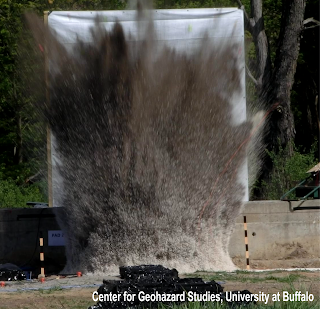Basalt wool inspired by Pele

-Alison There are many ways that we can learn from processes in nature. I study volcanoes to understand how they work, but we can also watch volcanic processes to learn how to make neat things that are practical like basalt fiber or basalt wool. Problem solving for experiments means having the right tools. Never underestimate your need for tape. When I started my postdoc I never expected how much shopping it takes to make an experiment. I spend a good quarter of my time shopping for materials (natural rock, ping pong balls), tools (from conveyer belts to thermal cameras), and shipping (how to get these things to rural New York). I also spend some of this time on the phone, or in a store, telling a sales person that I will not be using their product the way it was designed and I understand that I will void any warranty, but really I just need to know its voltage, dimension, or stability. This can be quite enlightening, but also distracting. Lab size

